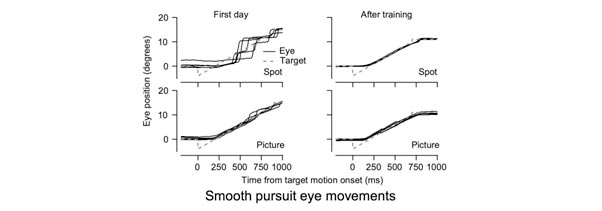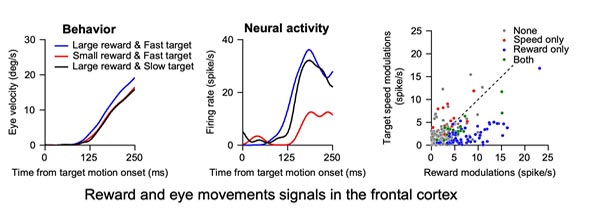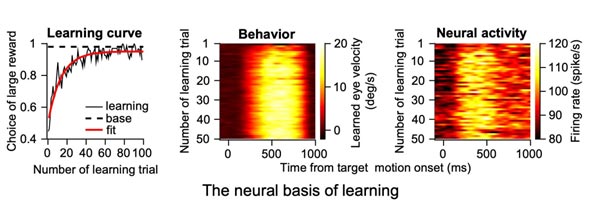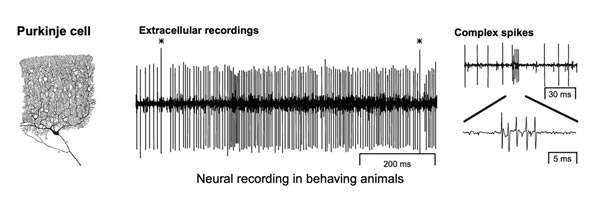The drive to seek reward controls almost every aspect of our behavior, from stereotypical reflexive behaviors, to complex voluntary actions such as choosing where to look, how to reach for a cup of coffee, or what companies to invest in. It is not surprising, therefore, that the symptomatology of neurological disorders that interrupt reward processing – such as those stemming from drug-abuse and depression – include deficits in the capacity to make even simple movements.
Our lab studies how what we want guides what we do, in particular we investigate how the brain uses reward to drive and shape behavior.
Our approach is to study the control of eye movements using neural recordings in animals as they behave. We study the activity of single neurons and neural networks while they operate in real time to produce behavior. Our lab’s research focuses on two major subcortical networks: the basal ganglia and the cerebellum. Both structures are essential for normal movements and impairment to either loop leads to devastating motor disorders. Of particular interest is elucidating the specific role of the basal ganglia and cerebellum in the control of movement. The goal of our research is to understand how the subcortical networks interact with the cerebral cortex to drive behavior that is guided by rewards.









